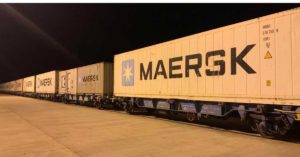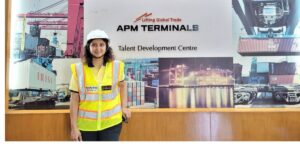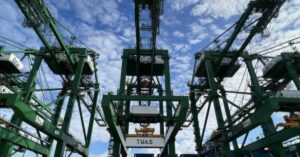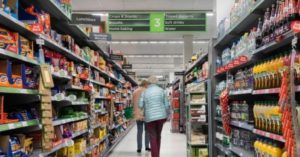“Electronic Bill of Lading is the future. We as the members of FFFAI and FIATA, are doing our level best to promote programs and common standards for digitisation and training globally,” predicts Tej Contractor, Director, Mayur C Contractor Logistics Pvt Ltd
How is the human resources landscape in logistics? What are the associations or government doing to bring quality professionals into this industry?
During COVID the significance of logistics came out. Since then, we have seen not only a great interest among people signing up, but also a lot of people trying to learn logistics as a subject. If not a professional MBA or a degree in supply chain, they tried to read a book on logistics and supply chain, or doing a small, short-term program.
Post COVID, we saw a very interesting uptake among institutions wanting to collaborate with us. And as FFFAI offers programmes through the Indian Institute of Freight Forwarders and a flagship programme is the FIATA Diploma. We saw deep interest in Indian schools wanting to adopt and extend our program.
We are also launching a programme very shortly with IIFT, which is the Indian Institute of Foreign Trade and also NITI. With this increase, we are seeing a great future for logistics. The interest of logistics is building. We as the members of FFFAI and FIATA, are doing our level best to promote programs and common standards for training globally.
You have mentioned about the efforts of association, but is there enough institutional support available for this industry, if somebody wants to get trained?
As far as logistics training is concerned, our government is doing a lot for up-skilling. We have now the logistics skill council, which is very active and running programs, workshops, creating job level training.
So we are not only talking about doing a logistics diploma, but even a forklift operator, a person doing data entry, e-commerce documentation can opt for micro programs to build their career in the industry.
As far as trade associations are concerned, I will speak about FFFAI and FIATA. We are largely talking about standardization. As trade associations, we ensure that we teach uniformity and also practical training. At educational institution people learn just theory. When they come to us as for training, we bridge that gap and make them industry ready.
The human resources ministry has foreseen in a study, a huge skill gap that is going to take place in the logistics industry by 2030. We are as trade associations and as a government under the National Logistics Policy, trying to bridge that gap.
What is the demand from the industry and how much of the human resources you are looking at? On one side we have professionals-in-service and up-skilling is one aspect. But you will also need fresh talent coming out of college. So how do you attract them into this industry? What the government and industry should do to attract these young minds?
We are seeing great initiatives by the government at the grass root level, not only for people who are above a certain category in terms of education, but even people who are below that category, they are seeing people who have not passed their 10th grade, we are seeing governments emphasizing and giving them free education to grow through various programs.
We are seeing people who are in intermediate, so between 12 and their degrees. They are getting opportunities to grow in the space.
Coming to learning with the new generation, as we have seen innovation that took place. At FFFAI, we decided to put and push a regime of e-learning. We launched the e-learning program where we teach the children in pieces. Attention span of someone on their phone is fairly limited.
So what you can do is you can run, learn a topic, we have compressed a topic which was one hour into 15 minutes. Visual aids, we’ve also used Gamification to a large extent. Personally, I have created a chatbot which we use internally in my organization when we induct people and we use gamification. We are seeing an increase in a balance between online learning and offline learning.
Most of the businesses in our industry are age old, like six, seven, eight decades old? So, how is the technology adoption now in the businesses? And I heard that FFFAI and other associations are trying to implement Blockchain. So can you give me some insight into that?
We have created a system where everything can be digitally put in place.
So everyone can do their process (part of work) and update it, once they have done the process it was put in a system through their mobile.
So even the digital data input is not difficult at all. And the next guy who was responsible for the next task knew what had to be done.
And that information was saved for a later day whenever required.
This is what is required in organizations today.
As an association, we realized early that digitalization is the need of the hour. Most of our members are small members. Investing in technology is not cheap. There are a lot of options. We don’t know what to choose.
Further, you don’t know what to stick with. Often, we have that thing that I will get onto a system. But then because of our team members have challenges, then we decide that we will stick with the original or move further.
So as a trade body, we said, what is it that our members require? So, the Custom Broker is at the heart of our digital innovation. The first thing they are going to need is validation. The most interesting update we have seen is the electronic Bill of Lading. During COVID period courier companies couldn’t work because documentation was stuck. And this gave rise to the importance of the electronic bill of lading. It is a significant breakthrough due to the speed and efficiency with which you can transfer the goods, transfer the document and also the security and the audit trip.
So these are two primary reasons that the electronic bill of lading is the future. Now if you have a custom broker or a freight forwarder issuing a transport document, we realize that how is it going to be validated? So what we did is we created something called a single sign on. A single sign on is nothing but a single user ID that we have, which can be used in any technology company that connects with us. We have a few startups which are large in the industry today. We’ve seen a lot of interest in the log tech business.
Now tomorrow there will be 50 players who come in for a digital platform or an organization to onboard 6,000 members to validate 6,000 members is a very difficult and time consuming process. So we said why don’t we enable any technology player to connect with us just through an API where we will validate the member.
Further, for our member, again keeping them in mind, security is a big issue. To have 50 different user ID passwords is a risk. So we said why don’t we have our user ID password that will work through any digital
plan. So all the member has to do is create a single sign on with FFFAI and that single sign on will actually work through any system that’s connected with us. This is the first step to Blockchain where FFFAI will validate that you are a user in real time.
We are not validating you as a passive member saying we have validated you one year ago and you still continue to remain a user or a company that is valid. The second very important thing is FIATA has recognised the importance of digitalization and created the electronic bill of lading which was launched last year.
We’ve seen a great interesting uptake. We had 26 associations globally that have signed up for the FIATA bill of lading, and we have about 22 TMSs or software transport management service providers who have come on board. The FIATA bill of lading is so unique because it creates a QR code on every document.
So the moment you generate a FIATA bill of lading you create a QR code and you have a document that can be digitally transacted or transferred to any member or any customer that you have. And that customer then can further transfer the document.
So as trade associations we are effectively being enablers to companies to ensure interoperability takes place. So FIATA is a part of something called the FIT Alliance which is the future of international trade where we have DCSA which is the Digital Shipping Container Association. We have the ICC which is trade. We have BIMCO which is the largest organization issuing charter parties.
And we have SWIFT which effectively works on standards for negotiating partners. We are focusing together to create interoperability and promote the use of digital government. So this is what associations are doing to ensure that we enable members to work digitally.
Can you give me an insight into how do you see the market, how is the business and what is your vision for this company?
What has really taken us places is that we have largely been digitally focused. As I mentioned earlier we create a digital platform and focused largely on automation. We saw that using this automation we know we enhanced efficiency almost 36 to 38%. By that I mean each individual would perform at a beta of 36 percent so, 30 percent higher than what they were doing without the use of technology.
So we have grown with our customers. We have chosen customers largely in our know which are first into creating value which is manufacturing or creating value in a segment where even though it’s not manufacturing they are in their niche.
We saw opportunity in FTAs. FTAs is an area where you know a lot of people as customer brokers or as freight forwarders feel that they are only providing a service. What we did is we provided value.
We went to the customer and sat with them and said okay what’s your business plan? Why don’t you try and import from a particular region or a country or a trading block because that’s where you will see opportunity later on. We see trade between you know countries that have free trade agreements increase exponentially.
I was part of the Indo-Lanka free trade agreement launched in the year 2000. One of our clients set up a plant there and also wanted to set up a logistics division. So from very early on we’ve been involved with three FTAs and you know being on a strategic side with a customer creates immense value. It’s not only a price it’s also about how you contribute to their success. If you participate in their growth you will grow them.
So that has been largely the vision of the customer. You know with one of our largest customers they asked us to innovate in some ways and some segments. We have actually taken over their complete supply chain.
So it has been a very interesting and rewarding experience.
It has given us the opportunity to add value.












